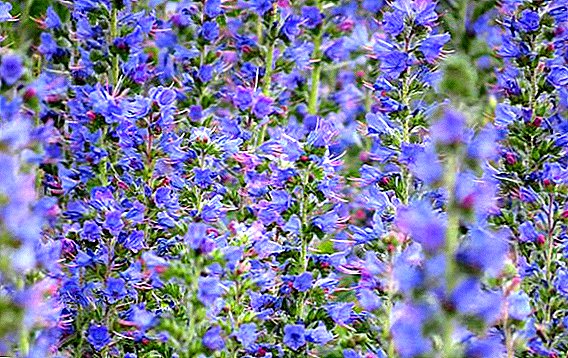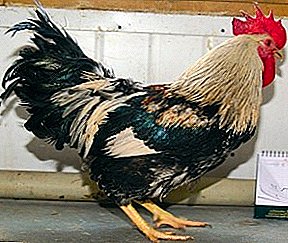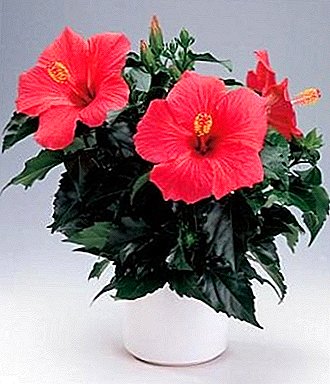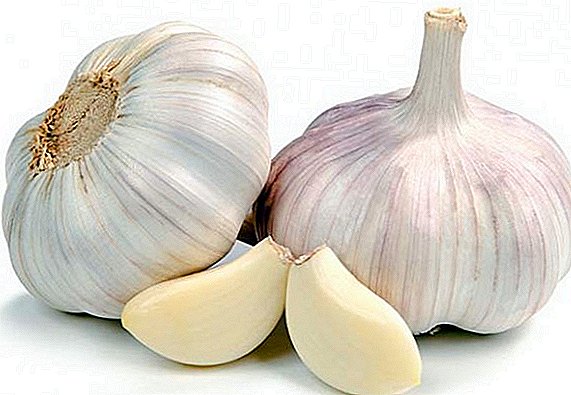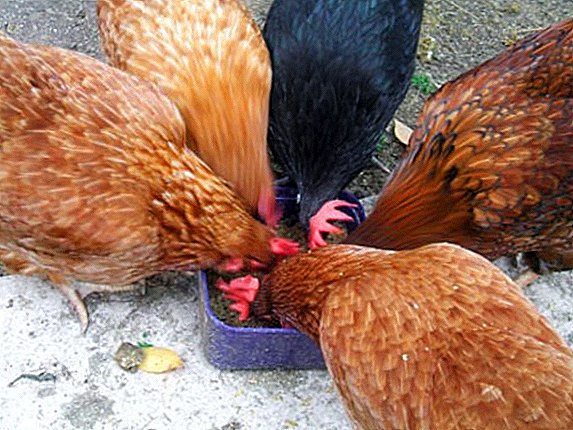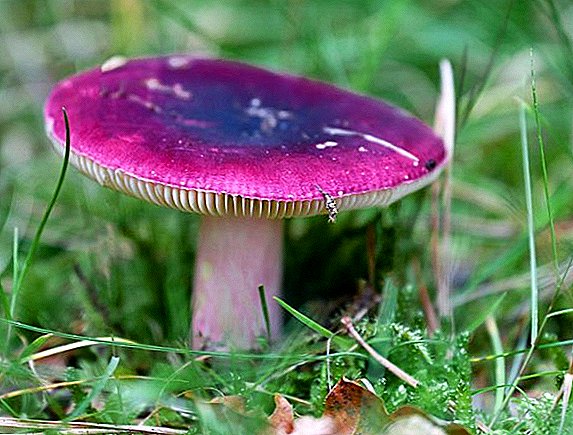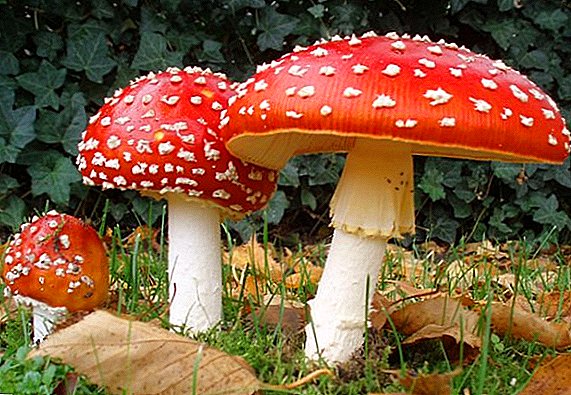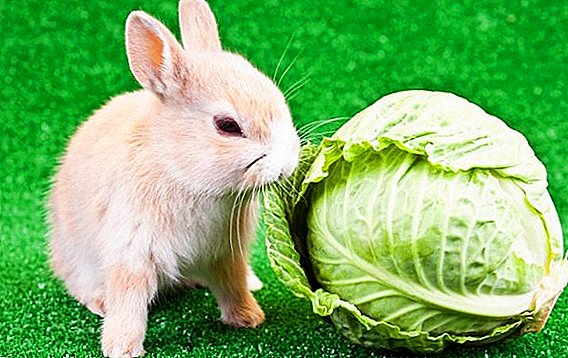 As you know, rabbits are exclusively herbivorous animals. It is widely believed that they can be fed in any quantities widely distributed vegetables, including cabbage. In fact, introducing this vegetable into the rabbit ration, it is necessary to take into account a number of factors, otherwise pets can suffer. Let us consider these factors in more detail.
As you know, rabbits are exclusively herbivorous animals. It is widely believed that they can be fed in any quantities widely distributed vegetables, including cabbage. In fact, introducing this vegetable into the rabbit ration, it is necessary to take into account a number of factors, otherwise pets can suffer. Let us consider these factors in more detail.
Is it possible to give cabbage to rabbits
There are several varieties of cabbage, significantly differing among themselves, both externally and in terms of the set of organic substances, vitamins and trace elements in their composition. All this needs to be taken into account, giving the rabbits a particular variety of this vegetable.
It is strictly not recommended to feed too much cabbage to animals, and even more so to transfer them completely to cabbage ration, this leads, at a minimum, to a serious disruption of their digestive system.
Find out what vegetables and fruits can be given to rabbits.
White-eyed
This most common type is especially rich in vitamins P and C, calcium, potassium, carbohydrates and proteins. It also contains many other nutrients, and in addition, rabbits eat it with pleasure because of its high taste qualities, at the same time replenishing the body with the elements necessary for its normal development.
However, white cabbage (as well as other varieties of this vegetable) contains a lot of coarse dietary fibers that cause indigestion in animals, the consequence of which are loose stools and dysbacteriosis.  In addition, in the cabbage of any variety there is a lot of sulfur, which irritates the mucous membrane of the digestive organs of animals and contributes to abundant gas formation.
In addition, in the cabbage of any variety there is a lot of sulfur, which irritates the mucous membrane of the digestive organs of animals and contributes to abundant gas formation.
Thus, cabbage can be introduced into the daily rabbit diet, but it is necessary to limit its daily portion to 100-200 grams - the volume depends on the weight of the animal and its individual characteristics. It is recommended to feed only the upper cabbage leaves (they need to be washed), preferably these leaves should be dried or slightly welded.
Important! If the rabbits still have problems with digestion even from small portions of cabbage, then the cabbage component should be excluded from the daily diet and limited to occasional feeding of animals with this vegetable or completely excluded it from the diet.
Savoy
Externally, the Savoy cabbage is very similar to white cabbage, but its leaves are corrugated and thinner, and the head is loose, loose. Compared to white, it contains about a quarter less coarse fibers and mustard oil, so its content in the daily rabbit diet can be slightly increased. 
Beijing
This variety differs from the white in a lower content of vitamin C, but then it is about two times more vegetable protein. It is recommended to give it to rabbits in the same volumes as white one, and in the same way, using only the upper leaves, pre-washing them and infusing them. It is desirable to remove wide veinlets on leaves.
Read more about which branches can be given to rabbits, and also find out whether it is worth giving the rabbit cherry branches.
Colored
This variety is superior to albumen in the content of vegetable proteins by 1.5-2 times, and in ascorbic acid (vitamin C) by 2-3 times. In addition, it is particularly rich in glucurraphin - this organic compound prevents the development of pathogenic bacteria. Cauliflower can be introduced into the daily rabbit diet in the same volumes as white cabbage.
Red Knot
Rabbit bosses unequivocally oppose the use of red cabbage as food for rabbits. In general, its composition is very similar to that of the white one, but there is an increased concentration of some organic compounds harmful to rabbits.  Such compounds cause disturbances in the gastrointestinal tract of animals. Negative effects can occur even with the use of a small amount of this product.
Such compounds cause disturbances in the gastrointestinal tract of animals. Negative effects can occur even with the use of a small amount of this product.
Kohlrabi
In addition to external differences, this product differs from whitefish by its high content of glucose and vitamin C. Rabbits are recommended to eat dried shoots and stems with a diameter of not more than 5 cm. The product rate per adult individual is not more than 100-200 g per day.
We advise you to read about whether it is possible to give the rabbits dill, cereals, bread, regular milk and powdered milk, and also find out what water to water the rabbits, what grass to feed the rabbits.
Pickled
Cabbage in this form is used by rabbits with great pleasure. In addition to excellent taste, it does not lose value as a source of nutrients. You can give no more than 100 grams per day of this product to an adult animal.
It is recommended to feed the rabbits occasionally with this product, it is still better not to introduce it into the daily rabbit diet. Usually, a fermented product of animals fed exclusively in winter.
Frozen
In this case, the recommendation of the experts is unambiguous - it is impossible to feed frozen cabbage of any animal species. Otherwise, they begin serious problems with the intestines. 
Why it is impossible to give a cabbage stalk
In the stalk, as well as in the cabbage leaves adjacent to it, the highest concentration of trace elements and organic compounds. With such a high concentration of substances, both beneficial and harmful, the rabbit's body can not cope, so the reaction in the form of abdominal distention and upset stomach of the animal occurs very quickly.
Did you know? Cabbage is used not only in cooking, cosmetology and medicine. Currently, there are many decorative varieties of it, a variety of shapes and colors that adorn the flower beds. For the first time invented to use this plant in this form the Japanese.
Feeding rules
In order to avoid problems with the health of rabbits due to this vegetable, it is necessary to follow certain rules, in particular, to take into account the age of animals and the norms of product consumption for young and adult individuals.
From what age can
Experienced breeders recommend starting to give cabbage to rabbits not younger than 3.5-4 months of age. The use of this vegetable at a younger age usually ends for an animal with a severe upset stomach. 
How much can you give
At first, this vegetable is given to young animals in very small quantities, 30-50 g per individual. If the reaction to it is normal, its share in the feed is gradually increased and adjusted to the adult norm, which averages 100-200 g of product per day, but this value can be adjusted for the weight of the animal, as well as its individual characteristics.
Did you know? It is believed that the name "cabbage" came from ancient Rome. Since the cabbage head with some imagination can be represented by a human head, the Romans called this vegetable caput, which means "head."
What else you need to feed to diversify the diet of rabbits
In addition to cabbage leaves, there are a large number of vegetables and other products that help make the diet of rabbits balanced and varied.
We list only the main products:
- vegetables are recommended to give carrots, beets and potatoes (boiled and in small quantities), zucchini, pumpkin;
- grass hay, cereal straw and legumes;
- dried branches of fruit trees (apple, plum), as well as shoots of willow, willow, maple, linden, aspen;
- their grain oats (the best option), rye, wheat, barley, corn;
- wheat bran, meal, cake;
- legumes from peas, lentils, soybeans;
- compound feeds;
- various supplements (vitamins, herbal flour, fish oil).

So, rabbit can be fed with cabbage, but it is necessary to limit its share in the daily diet, since this vegetable can cause serious problems with the gastrointestinal tract of animals. All varieties of this product are suitable for food, with the exception of the red one.
Important! The quality of the diet is very important both for ornamental animals and for rabbits raised for economic purposes. If they are not fed properly selected balanced feed, the animals in the farms will give poor quality skins and meat, and pets will behave apathetic and look inconspicuous.If you strictly control the amount of the product in the rabbit diet, it will become an important source of nutrients and trace elements for animals that will have a positive effect on their health and appearance.


